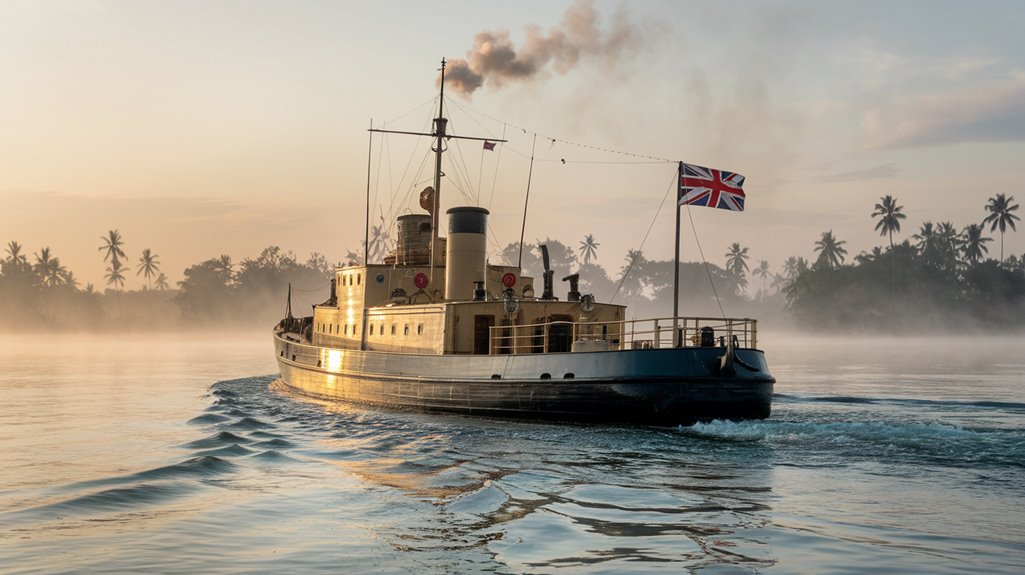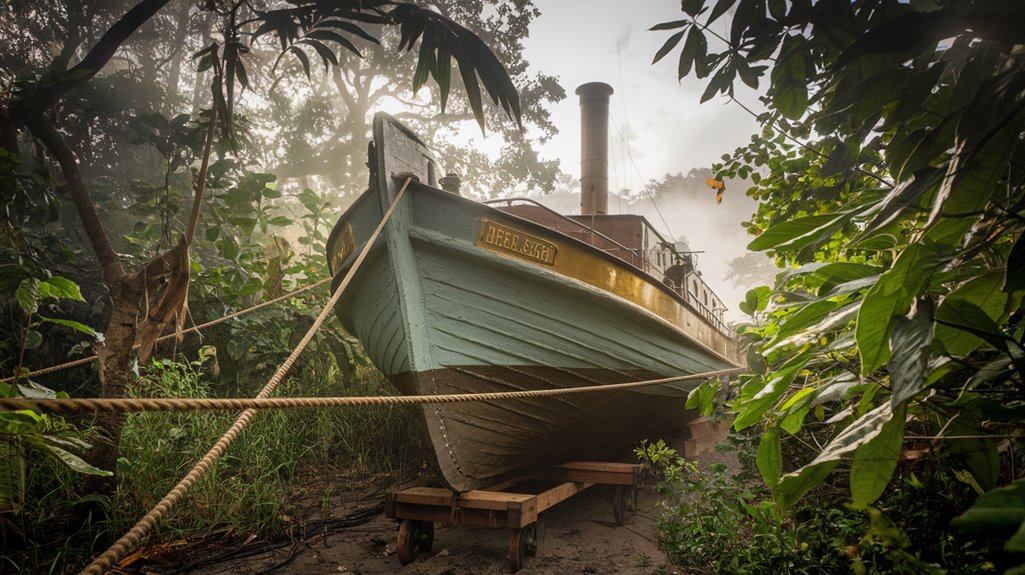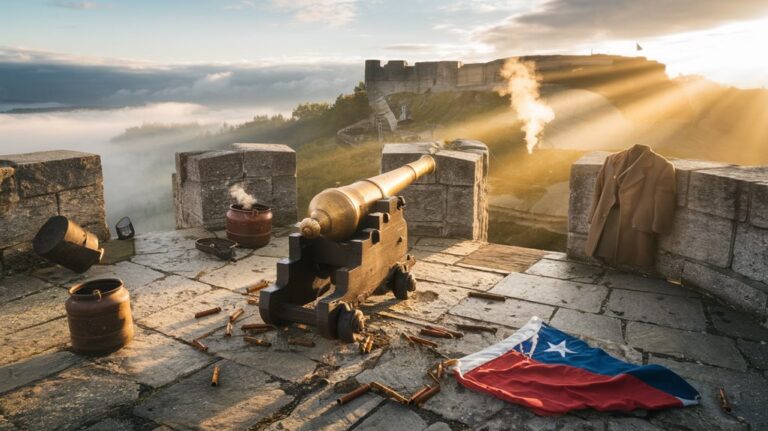World’s Littlest Naval War: Britain’s Bold Grab for One Tiny Lake
You've probably never heard of a naval battle fought over an African lake, but this forgotten campaign changed the course of World War I in East Africa. When German warships controlled Lake Tanganyika in 1915, they didn't expect two tiny British motorboats to challenge their dominance. What followed was a remarkable tale of ingenuity, where naval officers hauled vessels through 3,000 miles of jungle and mountain to wage war on the world's longest freshwater lake.
A Lake Worth Fighting For: Lake Tanganyika's Strategic Importance
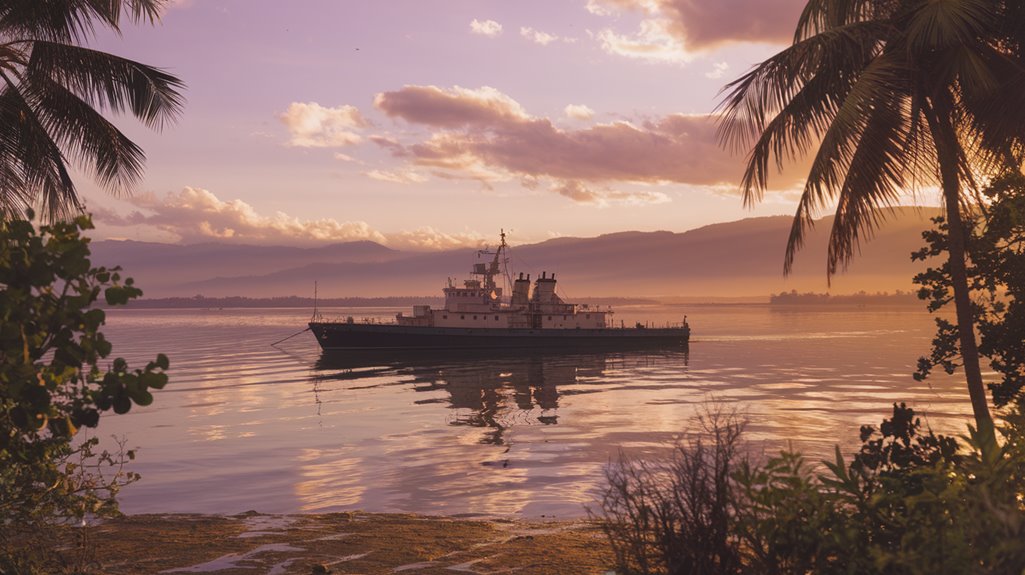
The vast Lake Tanganyika stands as East Africa's crown jewel of maritime commerce, bordering four nations and serving as an essential lifeline for regional trade.
You'll find its geopolitical significance reflected in major shipping centers like Bujumbura, Kigoma, and Mpulungu, which form a critical transportation network connecting the region's economies.
The lake's economic potential extends far beyond its shores, with 90% of the surrounding population relying on agriculture and livestock. Today, the lake's sustainable management is governed by the Convention of 2003, ensuring cooperative oversight among the bordering nations.
You're looking at a region where farming products generate 81% of export earnings, while promising opportunities in commercial agriculture and light manufacturing remain untapped. The area has seen significant evolution with its transition from a manufacturing base to an economy now dominated by agriculture and mining.
The lake's strategic location has created a natural hub for maritime trade, making it an irreplaceable asset for any power seeking to control East African commerce.
David vs. Goliath: German Naval Dominance Meets British Ingenuity
At first glance, anyone would've thought German naval dominance on Lake Tanganyika was unshakeable.
With the powerful *Graf von Gotzen* and armed steamers *Kingani* and *Hedwig von Wissmann*, the Germans controlled the lake's crucial resource allocation and transport routes. During this period, aggressive foreign policy by Kaiser Wilhelm II contributed to mounting tensions across all German territories.
But you'd be amazed by Britain's audacious naval tactics.
They transported two small motorboats, *Mimi* and *Tou-Tou*, across continents by rail and ox-drawn wagons to challenge the German fleet. The expedition's incredible journey required building 200 makeshift bridges through treacherous terrain.
On December 26, 1915, these tiny vessels proved that size isn't everything.
They outmaneuvered the *Kingani*, sinking it and killing its command staff.
This David-versus-Goliath victory marked a turning point in the lake's control, demonstrating British ingenuity could overcome seemingly insurmountable odds.
The success opened the region to Allied offensives, dramatically shifting the war's dynamics in East Africa.
The Remarkable Journey: Moving Boats Through the African Jungle
Moving gunboats through African jungles proved to be one of history's most intimidating logistical challenges.
The transport logistics involved breaking vessels into thousands of portable loads, while jungle navigation demanded expertise in traversing dense vegetation and treacherous waterfalls. Many remote African villages were only accessible by water, making these river routes critical for reaching isolated communities. Building a successful travel blog requires consistent content creation, much like these challenging water routes required persistent effort.
You'd be amazed by the ingenuity required to complete these missions. Engineers constructed primitive shipyards in remote locations, while teams coordinated complex operations using:
- Railroad networks when available
- Native porters carrying dismantled boat sections
- River routes requiring constant refueling by chopping riverside trees
When you couldn't rely on coal, you'd burn wood to power these vessels.
The journey could take months, with crews hauling boats through cataracts by sheer manpower.
These prefabricated vessels would finally be reassembled at makeshift shipyards, ready to join the fight on Africa's remote waterways.
Battle for Control: Naval Clashes on Lake Tanganyika
Naval supremacy on Lake Tanganyika hung in the balance as German warships dominated these strategic waters at the start of World War One.
You'd find the Hedwig Von Wissman and Kingani controlling the lake, enabling vital troop logistics between German territories. After sinking the French vessel Alexandre Del Commune, the Germans' naval tactics seemed unbeatable. Like their surface raiding efforts elsewhere, German ships effectively disrupted Allied operations.
But Britain's counterstrike would change everything. On December 26, 1915, HMS Mimi and Toutou captured the Kingani, which they repurposed as HMS Fifi. The mission was led by Lt.-Cmdr. Geoffrey Spicer-Simson who commanded the naval expedition.
The British fleet then sank the Hedwig Von Wissman on February 8, 1916. Facing defeat, the Germans scuttled their final vessel, the Graf von Götzen, rather than surrender it.
Britain's bold strategy had paid off – they'd broken German control of the lake, reshaping the war's African theater.
Triumph on the Waters: How Britain Secured the Lake
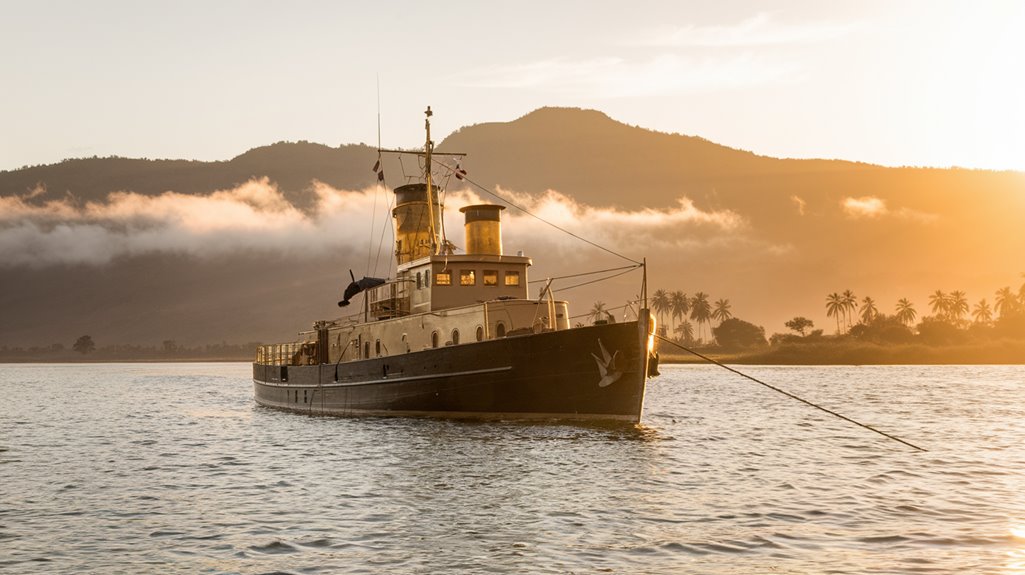
Once British intelligence revealed German shipbuilding on Lake Tanganyika, Admiral Sir Henry Jackson and big-game hunter John R. Lee devised a bold plan.
They'd transport two motorboats, HMS Mimi and Toutou, across Africa through unexpected alliances with local forces and Belgian support.
The tactical maneuvering paid off in three decisive victories:
- British forces captured the German vessel Kingani, renaming it HMS Fifi
- They sank the Hedwig von Wissmann in a fierce battle
- Their success forced the Germans to withdraw entirely from the lake
You'll find it fascinating that this small-scale naval operation had massive strategic implications.
 nearly 1,000 troops, had posed a significant threat until British intervention.
nearly 1,000 troops, had posed a significant threat until British intervention.
By securing control of Lake Tanganyika, British and Belgian forces prevented German troop movements and secured essential supply lines. The operation demonstrated the Allies' growing mastery over German colonies, which would never be restored after the war.
This victory proved significant for the broader East African campaign, effectively ending German dominance in the region.
Legacy of the Lake Campaign: Impact on the East African Theater
The strategic victory on Lake Tanganyika came at a staggering human cost that shaped the entire East African campaign.
You'll find that controlling the lake enabled Belgian forces to attack from the west, but the logistical challenges were enormous. Consider this: it took 16,500 carriers just to move one ton of supplies, and they'd to traverse 1,500 miles from India and Durban to reach the front lines.
The human costs were devastating. Out of one million recruited carriers, 95,000 perished from poor rations, inadequate sanitation, and insufficient medical care.
Disease ravaged the armed forces, with 75% of troops falling to malaria, dysentery, and other illnesses. The campaign, lasting until November 25, 1918, resulted in approximately 365,000 civilian deaths due to war-related famines. The unique challenges of the terrain meant that soldiers often preferred actual combat to dealing with the wildlife and conditions they encountered daily.
While you might've heard tales of German forces' undefeated prowess, the reality was far grimmer for everyone involved.

